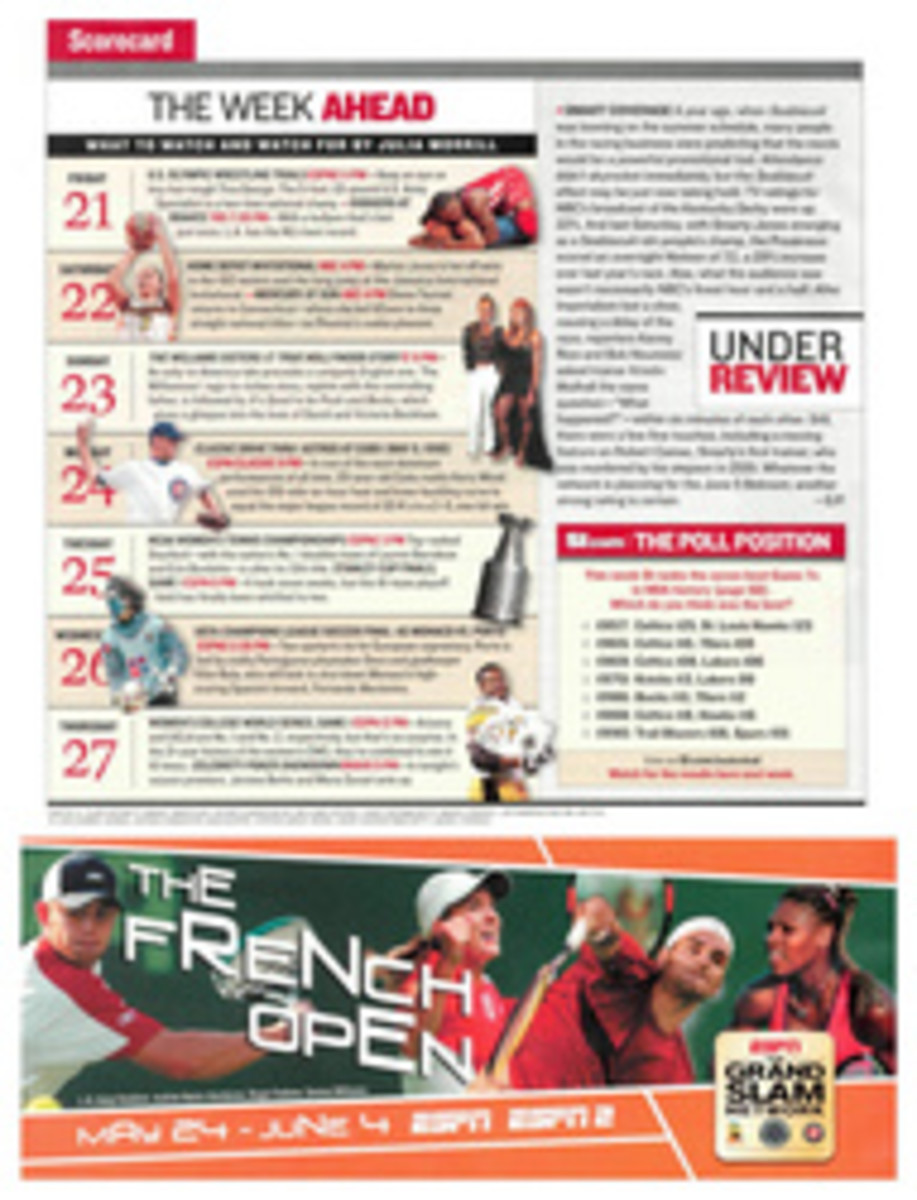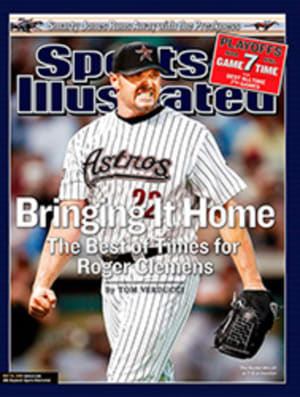
Running on Empty A new account of the race to the first four-minute mile fails to do justice to that epic quest
THE PERFECT MILE
by Neal Bascomb
Houghton Mifflin, $24, 336 pages
Well before the first sub-four-minute mile was run 50 years ago
this month, three men were capable of punching through that
barrier. Had Britain's Roger Bannister not burned himself out
racing the 1,500 meters at the Helsinki Olympics, he could have
cracked 4:00 two years sooner. Had Australia's John Landy not
scorned pacesetters, he'd have done it in December '52 in
Melbourne. Had Wes Santee of the University of Kansas not been
trapped behind a dawdling pack in the June '53 Compton Mile, his
blazing last 700 meters would have taken him under.
Why did the four-minute mile take so long? Because it's harder to
lead than to follow. A miler going at a four-minute pace (15 mph)
uses about 10% of his energy to part the air. But that air stays
parted: A runner drafting on a leader does about 7% less work.
Bannister, Landy and Santee all were capable of running sub-four,
but none could run it alone. The first to break four minutes
would be the first to exploit the 7% solution.
Not that we read any of this in Neal Bascomb's The Perfect Mile,
a fascinating and frustrating account of the quest. Clearly an
able historian, Bascomb has set himself the task of taking us
back and letting us judge events and characters from contemporary
sources, but it's as if he refuses all pacers. He needs to
explain a few things.
It needs to be said that Kansas coach Bill Easton failed Santee
by making him run a killing college schedule, and that Landy
failed himself, albeit nobly, leading every step of try after
try, so tiring himself that he continually fell short. Bannister
was the first under four because his coach, Franz Stampfl,
trained two other near-four-minute milers, giving Bannister a
team of windbreaks that, on May 6, 1954, launched him to his
historic 3:59.4.
These are great stories, undeserving of imprecise telling. I
couldn't put Bascomb's book down, except for the times I threw it
across the room. The author relies too much on old newspaper
accounts, and his hand on the prose tiller is occasionally
unsteady. (Santee's "vulnerability had a limit buttressed with
steel.") Bascomb holds up the great August 1954 duel between
Landy and Bannister as the titular "perfect mile," but how
perfect could it have been given that Santee, who had joined the
Marines, was denied leave to run in the event? In a "perfect"
mile the Kansan--strong enough to stay with Landy and possessing
a better kick than Bannister--would have won.
And yet.... Such drawbacks are almost forgivable because this was
one of sport's great hunts. All three men were exemplary. Landy
was the hardest trainer and the most accessible. Bannister was
the most gifted, but his dedication to his medical career
compromised his running. Santee was horribly mistreated by the
AAU regarding eligibility. These were pioneers. They deserve to
be understood in depth.
The movie rights to The Perfect Mile have been snapped up by two
of the producers of Seabiscuit. If ever there were a work
begging for a movie to be better than the book, this is it.
COLOR PHOTO: HOUGHTON MIFFLIN (MILE)
B/W PHOTO: BETTMANN/CORBIS (SANTEE) ALMOST PERFECT Santee came up just short of 4:00.

